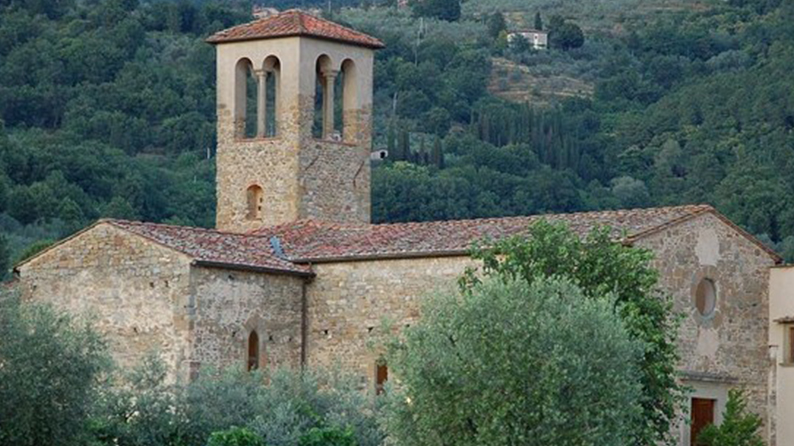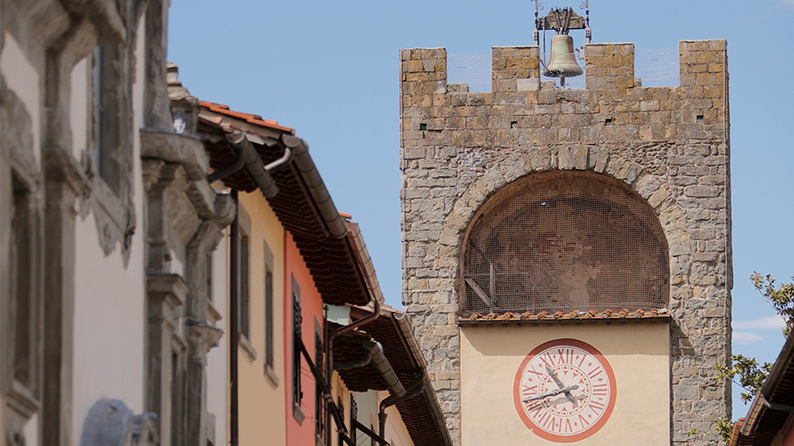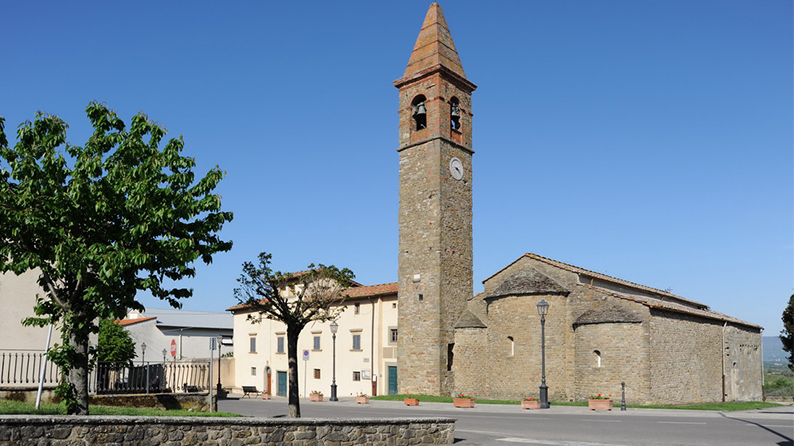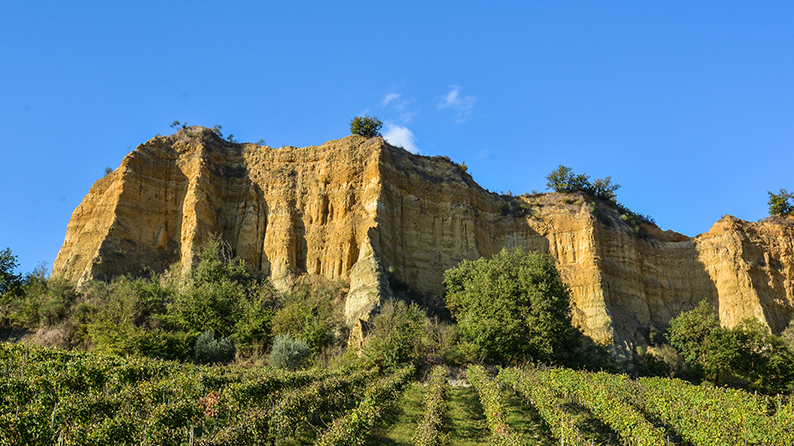Castelfranco Piandiscò
Abbey of San Salvatore in Soffena

The Annunciation attributed to the Master of the Cassone Adimari follows. In the transept, on the right, the great Massacre of the Innocents is striking for the drama of the representation. Generally attributed to Liberato da Rieti, it has recently been referred to a Florentine painter, the Master of Bibbiena, so called for the triptych he painted there and which served as a term of comparison for the attribution of both the Massacre of the Innocents and of the underlying Visitation. The latter, stylistically more mature, was performed in a period close to that of Bibbiena (about 1425-1430) (Donati).Behind the altar, the Madonna enthroned with the Child with the SS. Lazzaro and Michele Arcangelo, still in a Gothic style but with an attempt to place it in perspective, is attributed to Mariotto di Cristofano, brother-in-law of Masaccio and Scheggia. On the left we see an Annunciation in the upper register and the Madonna della Misericordia in the lower one. In front of Madonna and Child with SS. Pietro and Francesco di Paolo Schiavo, Bicci di Lorenzo frescoed San Giovanni Gualberto, founder of the Vallombrosan Order, with scenes from the life of the saint.
INFORMATION
Free admission
OPENING HOURS
Monday, Wednesday, Friday from 1:00 to 7:00 pm Tuesday, Thursday, Saturday from 8:00 am to 2:00 pm
CLOSING DAYS
The 2nd and 4th Monday of the month and 1st and 3rd Sunday of the month January 1st, May 1st and December 25th
CONTACTS
For reservations and information: from Monday to Friday 8:00 am to 1:00 pm
Phone: 055 9631259
Phone: 055 9149551
Castelfranco – Historic centre

Porta Buia (on the north-west side) and Porta Montanina (on the north-east side) were demolished respectively in 1858-59 and in 1867.
The oldest representation of the entire city dates back to 1585 and is located between the Piante di Popoli e Strade in the Archivio dei Capitani di Parte Guelfa in Florence: a systematic mapping of the streets (of the Grand Duchy of Tuscany) was requested by the Grand Duke Francesco I de ‘Medici, which turned out to be very useful for reconstructing the ancient topography.
The Parish Church of Santa Maria a Scò

The frontispiece of the structure is decorated with five blind arches with long pilasters running parallel to the bottom and with a quadrangular stone row; it is also composed of regular stones.
The interior is spread over three naves and ends with groups of apses, with single lancet windows closed by alabaster slabs.
Inside it is almost possible to feel the whole sensation of peace and sacredness, where a solemn silence hovers, interrupted only by the whispering of prayers.
The interior is divided by monolithic pillars and columns surmounted by the trussed roof, which highlights a fresco of undoubted beauty, depicting the Madonna enthroned with the Child; the painting is attributed to Paolo Schiavo (from the mid-15th century). The interior of the church is also embellished with Romanesque capitals, of great beauty, carved in high relief in pietra serena, dating back to the 12th century.
In 1862 it was damaged by a lightning during a storm, so the bell tower was renovated, bringing to light all its magnificence and the entire structure raised and embellished by the pyramidal spire roof surmounted by the lightning rod.
CONTACTS
SP85, 52026 Pian di Scò (AR)
Parish center
Phone: 055 960133
The Balze

Walking or riding in the valleys winding through the high and steep sides of the Balze allows you to immerse yourself in the mysterious atmosphere of a fairy tale, for this reason you find sites with imaginative names such as “Casa delle Fate”, “Paradiso”, “Purgatorio ”or“ Inferno”.
CONTACTS
City Hall
Phone : 055 9631259 – 262
Walking or riding in the valleys winding through the high and steep sides of the Balze allows you to immerse yourself in the mysterious atmosphere of a fairy tale, for this reason you find sites with imaginative names such as “Casa delle Fate”, “Paradiso”, “Purgatorio ”or“ Inferno”.
CONTACTS
City Hall
Phone : 055 9631259 – 262
